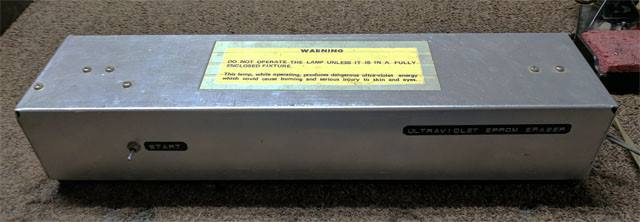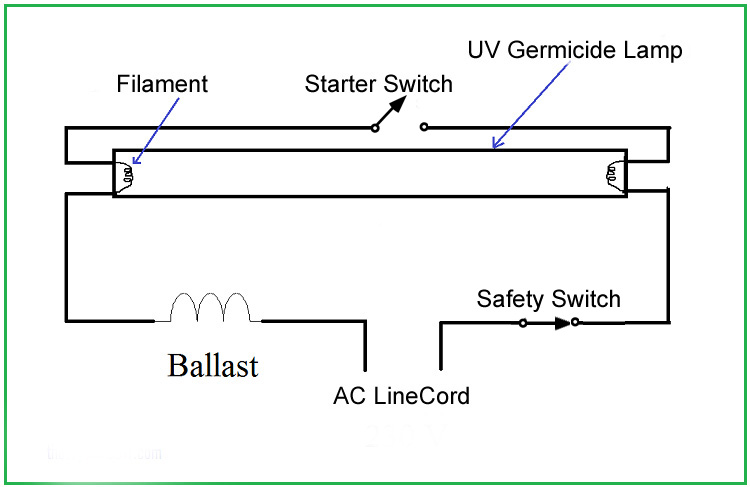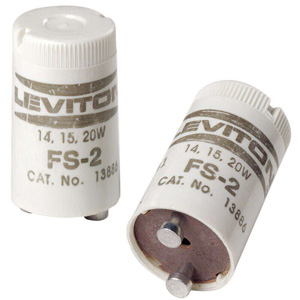Back in the 1980s when I began programming 8-bit computers like the 8080/Z80 series and created custom projects, I loaded programs into EPROMs. The 27xx series devices were easily found surplus. I had many with various memory capacities I obtained from work that were discarded during firmware updates. I built an EPROM programmer that ran on my Heathkit H89 computer. I needed a way to erase the programmed devices so I could re-use them. This is what I developed.

I needed an ultraviolet light source. In those days they were hard to find, mostly because they were dangerous to view with the naked eye and they were expensive. I knew they used UV lamps in lavatory germicide fixtures. You could see the purple glow coming from them. I decided to look around for a spare bulb for one of these machines. I went to the local electrical supplier and asked at the counter. The clerk produced a small lamp for about $20. Perfect.

This lamp was the size of a small lamp often found in small desk lights. It looked like a fluorescent tube. UV lamps are similar but do not have the phosphorescent (fluorescent) coating inside the glass. They are clear and that's how the UV rays can be emitted. Since I knew how a fluorescent desk lamp worked, I just needed to make something similar for the UV lamp.
Normally, the EPROMs are placed on a table and the eraser is placed on top of them. If you lift the eraser from the table when the light is on, the safety switch will kill the light. In the picture, I am pressing my finger on the safety switch to keep the light on with the opening exposed for illustration.

First, I found a balast inductor from an old 15 watt fluorescent desk lamp. Then I got a suitable aluminum box in which to install everything. I needed a starter switch, safety switch and a power cord. I wired everything according to the diagram. The starter switch is a momentary contact style such as a push button.
When you plug this in to the wall, nothing happens. That's because the mercury vapor in the lamp is not conducting yet to complete the circuit. When you hold down the starter switch for a few seconds, it completes the circuit through the lamp filament heaters. This heats the mercury vapor gas to the point of conducting. When you release the starter switch the gas will conduct and glow.
If you lift the eraser off the table, the safety switch will interrupt the light. If you then return the eraser to the table, you would have to start it again with the starter switch.

If you wanted to automate the starting you could install one of these starters in place of the starter switch. You should choose a starter with a wattage close to the wattage of your UV lamp. I took one apart to see how it works. Inside the shell you will find a glass bulb filled with argon gas. There are two electrodes and a small capacitor in parallel with them. One electrode has a bi-metal curved strip attached. The strip is close to the other terminal but not touching it. When you power up the light fixture, the starter's argon gas will glow like a neon light bulb. The starter's argon gas will glow because the terminals are receiving AC line voltage through the UV light's filament terminals. The ignited argon will heat the bi-metal strip. It will eventually expand until it touches the other terminal. This will complete the eraser lamp's starter circuit just like the starter switch would to. When the metal connects to the other terminal, the argon glow will stop because there's no more voltage across the starter's terminals to keep it lit. It will cool down, the bi-metal strip will retract, and the starter's terminals will be open again, just like releasing the manual starter switch. The UV lamp is now illuminated. The illuminated UV lamp is keeping the argon in the starter from igniting again. The starting sequence will not repeat again unless the UV lamp is no longer lit. This is why you often saw old fluorescent lamps flickering in an endless loop of trying to start. When the fluorescent lamp gets too weak for its mercury vapor gas to stay ignited, the gas in the starter bulb would glow and initiate a start cycle. Once the fluorescent lamp is started, it does not have enough conductivity in the mercury vapor gas to stay ignited. It goes out, and the start cycle initiates again. Wash, rinse, repeat.



